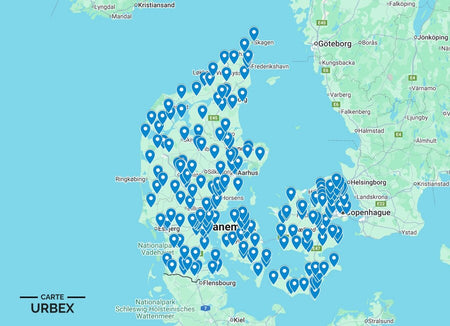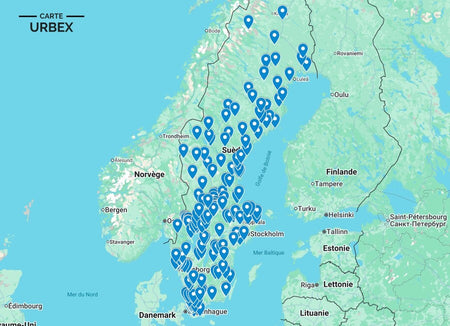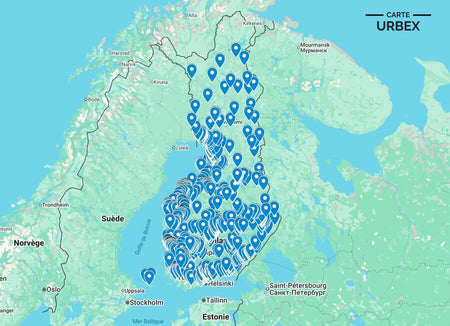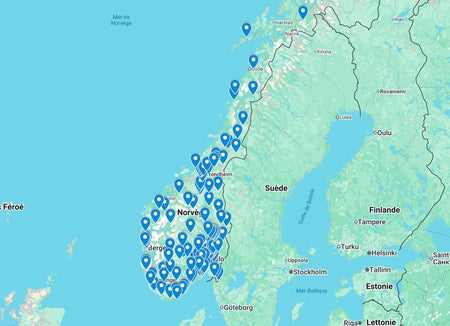Verlassene Orte in Norwegen: Vergessene Geschichte und verborgene Schätze entdecken
Einführung
Norwegen ist bekannt für seine atemberaubenden Fjorde, imposanten Berge und pulsierenden Städte. Doch jenseits der Naturschönheit und der modernen Kultur verbirgt sich eine Welt, die darauf wartet, entdeckt zu werden: die geheimnisvollen, verlassenen Orte, die Norwegen über seine Landschaft verstreut hat. Von verfallenen Fischerdörfern und verlassenen Fabriken bis hin zu unheimlichen Krankenhäusern und Bunkern aus der Zeit des Kalten Krieges erzählen diese vergessenen Stätten Geschichten aus einer anderen Zeit. Sie ziehen Stadterkunder, Fotografen und Geschichtsinteressierte an, die eine Seite Norwegens erleben möchten, die Touristen selten zu Gesicht bekommen. In diesem Artikel gehen wir der Frage nach, warum verlassene Orte in Norwegen so faszinierend sind, stellen einige der interessantesten vor und geben Tipps für eine sichere und respektvolle Erkundung.
Warum sollte man verlassene Orte in Norwegen erkunden?
Eine Reise in die Vergangenheit
Jeder verlassene Ort in Norwegen fungiert als Zeitkapsel. Ob verlassene Bergwerkssiedlung oder leeres Sanatorium – diese Orte offenbaren die soziale, industrielle und militärische Geschichte des Landes.
Der Traum eines Fotografen
Abblätternde Farbe, verrostete Maschinen und von der Natur zurückeroberte Gebäude bilden eine geheimnisvoll schöne Kulisse. Für Fotografen bieten verlassene Orte in Norwegen einzigartige und stimmungsvolle Motive.
Abenteuer und Entdeckung
Urban Exploration (Urbex) verbindet Abenteuer mit Neugier. Norwegens verlassene Stätten liegen oft in abgelegenen Gebieten, was den Reiz der Erkundung mit der Herausforderung ihrer Erreichung verbindet.
Berühmte verlassene Orte in Norwegen
Verlassene Fischerdörfer
Norwegens Küstengeschichte umfasst Dörfer, die einst blühende Fischergemeinden waren, aber mit dem Wandel der Industrie aufgegeben wurden. Einige bestehen noch heute aus leerstehenden Häusern und Häfen, die von der Vergangenheit zeugen.
Industrierelikte
Von alten Fabriken bis hin zu Kraftwerken – Norwegens industrieller Niedergang hat gewaltige Ruinen hinterlassen. Diese Stätten veranschaulichen den Wandel des Landes von der Schwerindustrie hin zu einer dienstleistungsorientierten Wirtschaft.
Militärbunker und Stätten des Kalten Krieges
Norwegens strategische Lage während des Zweiten Weltkriegs und des Kalten Krieges hinterließ Hunderte von Bunkern, Festungen und Tunneln. Viele dieser Bauwerke sind heute verlassen und liegen versteckt in Wäldern oder entlang der Küste.
Krankenhäuser und Sanatorien
Unheimliche, verlassene Krankenhäuser und Sanatorien erinnern an vergangene Zeiten der Gesundheitsversorgung. Ihre leeren Gänge und verfallenden Räume faszinieren Stadterkunder.
Wie man verlassene Orte in Norwegen findet
Online-Tools
-
Google Maps und Satellitenbilder : Achten Sie auf einsame Gebäude, leere Parkplätze oder Anzeichen von Vernachlässigung.
-
Historische Karten : Der Vergleich alter Karten mit modernen Karten kann Städte und Einrichtungen aufzeigen, die nicht mehr existieren.
Social-Media- und Urbex-Communities
Instagram, TikTok und YouTube sind voll von Entdeckern, die Fotos und Videos von verlassenen Orten in Norwegen teilen. Hashtags wie #urbexnorway , #abandonednorway und #forlattested sind gute Ausgangspunkte.
Lokalkenntnisse
Gespräche mit Einheimischen in kleinen Städten fördern oft verborgene Schätze zutage. Die Bewohner kennen in der Regel stillgelegte Fabriken, leerstehende Häuser, verlassene oder militärische Anlagen.
Historische Archive und Nachrichtenberichte
Alte Zeitungen und städtische Aufzeichnungen liefern wertvolle Informationen über die Schließung von Schulen, Krankenhäusern und Industriebetrieben, die heute beliebte städtische Ziele sind.
Sicherheits- und Rechtsaspekte
Sicherheitsrisiken
Die Erkundung verlassener Orte birgt immer Risiken:
-
Eingestürzte Böden und Decken
-
Schimmel, Asbest und giftiger Staub
-
Scharfe Trümmer wie Glas und Nägel
Sicherheitstipps:
-
Tragen Sie festes Schuhwerk, Handschuhe und eine Maske.
-
Bringen Sie eine Taschenlampe mit Ersatzbatterien mit.
-
Erkunde niemals allein – nimm immer einen Partner mit auf Entdeckungsreise.
Rechtliche Aspekte
Die meisten verlassenen Orte in Norwegen sind Privatbesitz. Das Betreten ohne Erlaubnis ist nach norwegischem Recht Hausfriedensbruch. Urbex-Erkunder folgen dem Prinzip: „Nimm nichts mit außer Fotos, hinterlasse nichts außer Fußspuren.“ Respekt ist unerlässlich.
Urbex-Ethik in Norwegen
Die Urbex-Community hat klare, ungeschriebene Regeln:
-
Nicht einbrechen – nur durch offene Öffnungen betreten.
-
Nicht beschädigen oder stehlen
-
Um Schaden und übermäßige Aufmerksamkeit zu vermeiden, sollten genaue Adressen nicht öffentlich geteilt werden.
Diese ethischen Grundsätze gewährleisten, dass verlassene Orte für zukünftige Entdecker erhalten bleiben.
Warum verlassene Orte in Norwegen Entdecker faszinieren
-
Kulturgeschichte : Sie bieten Einblick in Norwegens soziale, industrielle und militärische Vergangenheit.
-
Visuelle Inspiration : Perfekt für Fotografen, Künstler und Filmemacher
-
Abenteuer : Das Erreichen abgelegener und versteckter Orte steigert den Nervenkitzel.
-
Community : Urbex verbindet Menschen weltweit mit einer gemeinsamen Leidenschaft für Erkundungen
Häufig gestellte Fragen
Was sind die bekanntesten verlassenen Orte in Norwegen?
Zu den meistbesuchten Urbex-Orten zählen Bunker aus der Zeit des Kalten Krieges, verlassene Fischerdörfer, verlassene Sanatorien und Industrieruinen.
Ist es in Norwegen legal, verlassene Orte zu erkunden?
Die meisten Grundstücke sind in Privatbesitz, daher ist das Betreten ohne Erlaubnis Hausfriedensbruch. Einige Ruinen im Freien und Küstenbunker sind jedoch zugänglich.
Warum teilen Urbex-Explorer keine genauen Adressen?
Um verlassene Orte in Norwegen vor Vandalismus zu schützen und sie für zukünftige Entdecker zu erhalten.
Abschluss
Verlassene Orte in Norwegen sind mehr als nur Ruinen – sie sind Zeugnisse der Geschichte, die direkt vor unseren Augen verborgen liegen. Von gespenstischen Krankenhäusern und Industrieanlagen über geheimnisvolle Fischerdörfer bis hin zu Bunkern aus der Zeit des Kalten Krieges erzählt jeder Ort eine einzigartige Geschichte aus Norwegens Vergangenheit. Die Erkundung dieser Stätten ist eine Mischung aus Abenteuer, Geschichte und Kreativität. Urbex muss jedoch stets sicher, legal und respektvoll praktiziert werden. Wer bereit ist, abseits der Touristenpfade zu wandern, dem offenbaren Norwegens verlassene Orte eine Welt vergessener Schätze, die darauf warten, entdeckt zu werden.














